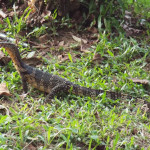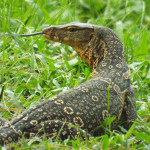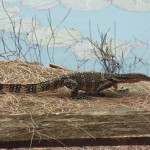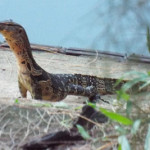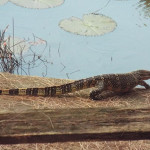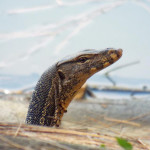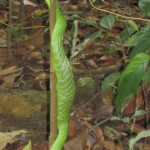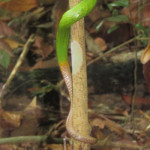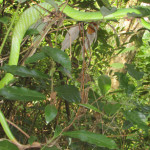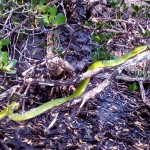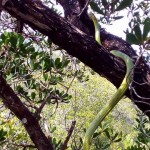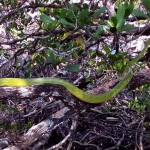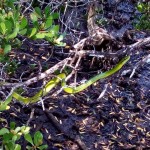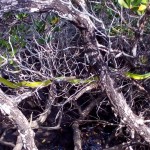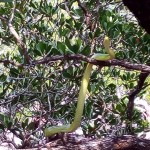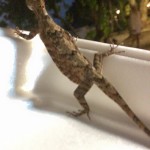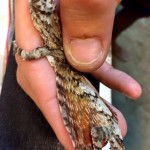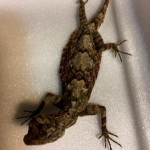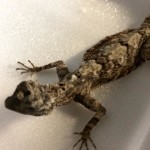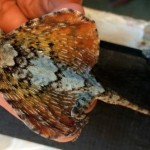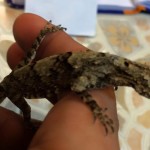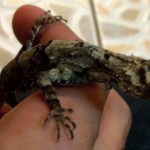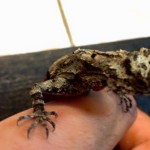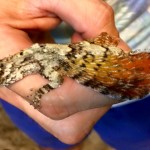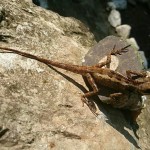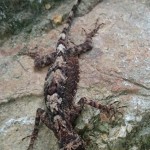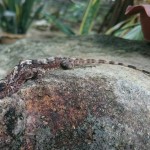Slow Worm (Anguis fragilis)
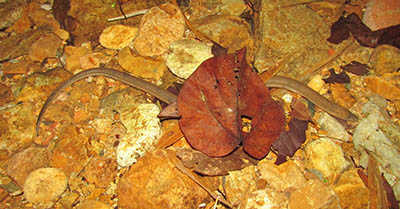
Image Copyright Paul Dunn
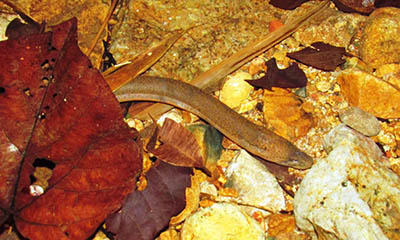
Image Copyright Paul Dunn
Last Observed: December 2015
Observed By: Paul Dunn
OK get ready. The slow worm isn’t actually a worm. And it isn’t a snake. It is actually a lizard without any legs that isn’t a snake. Yes they exist, this is one. Got it?
The Anguis fragilis, or slow worm, is a limbless lizard native to Eurasia. It is sometimes called a blindworm. Its German name, “Blindschleiche”, is derived from the Old High German plintslîcho meaning “blinding creeper”, perhaps because of its lustrous scales.
Slow worms are semifossorial (burrowing) lizards, spending much of the time hiding underneath objects. The skin of slow worms is smooth with scales that do not overlap one another. Like many other lizards, slow worms autotomize, meaning that they have the ability to shed their tails to escape predators. While the tail regrows, it does not reach its original length. They are common in gardens and can be encouraged to enter and help remove pest insects by placing black plastic or a piece of tin on the ground. On warm days, one or more slow worms will often be found underneath these heat collectors. One of the biggest causes of mortality in slow worms in suburban areas is the domestic cat, against which it has no defense.
Slow Worm Wikipedia
Spotted House Gecko (Gecko monarchus)
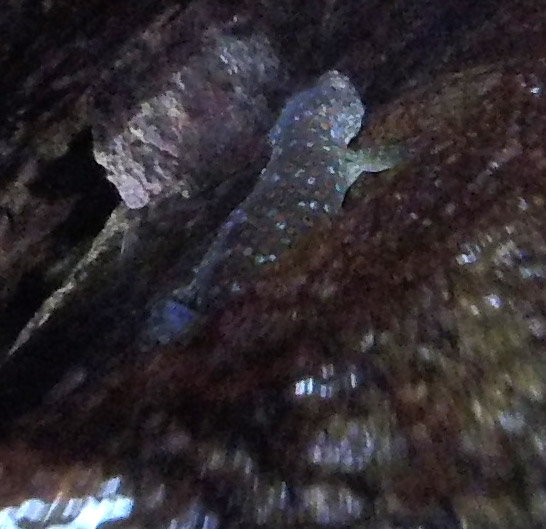
Image Copyright Paul Dunn
Last Observed: July 2016, Koh Chang
Observed By: Paul Dunn
The spotted house gecko (Gekko monarchus) is a species of gecko found in the Malay Peninsula (including southern Thailand and Singapore), some smaller Malaysian islands, Borneo (East Malaysia and Kalimantan), the Philippines, many Indonesian islands including Sumatra, Java, Sulawesi, and New Guinea (Irian Jaya and Papua New Guinea).
Characteristics
This reptile is flat-looking with a crocodile-like head. Most common eye color is gold, although green may appear also.
Their tails regenerate once dropped, as with most gecko species.
Males make quiet “tick tick tick” sounds when courting a female, both genders are capable of “popcorning” (a noise that resembles popcorn popping in the microwave) when uncomfortable or in danger.
Common House Gecko Wikipedia
Kuhls Flying Gecko (Ptychozoon kuhli)
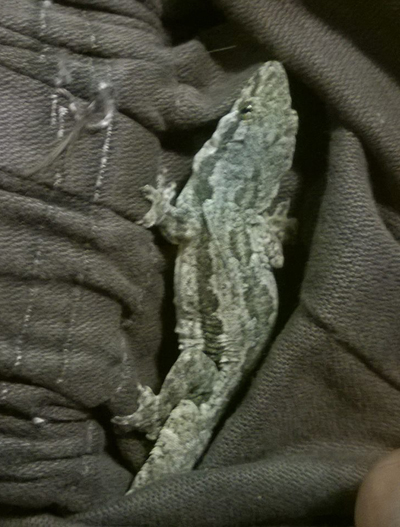
Image Copyright Natpha Kotkangplu
Last Observed: January 2016, Koh Chang
Observed By: Natpha Kotkangplu
Kuhl’s flying gecko is a member of the gecko family that has special adaptations that enable it glide through the air for short distances. These include webbed feet, flaps of skin on either side of its body and a flattened tail.
This gliding ability is obviously an excellent defensive tool as well as being pretty handy when you want to get to the next tree.
They have a greeny brown and tan patterned body that offers superb camouflage in their native arboreal environment.
Kuhls Flying Gecko Wikipedia
Other Koh Chang Reptiles
Southeast Asian Box Turtle (Cuora amboinensis)
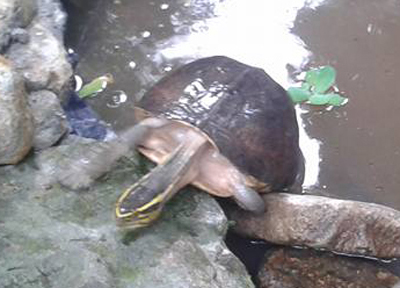
Image Copyright Colin Harris
Last Observed: February 2016, Koh Chang
Observed By: Colin Harris
The Southeast Asian Box Turtle has a shell that ranges in colour from blackish-brown to olive green. the shell has high concave dome shape.
Their conservation status is rated as vulnerable.
Southeast Asian Box Turtle Wikipedia
Banded Krait (Bangarus fasciatus)
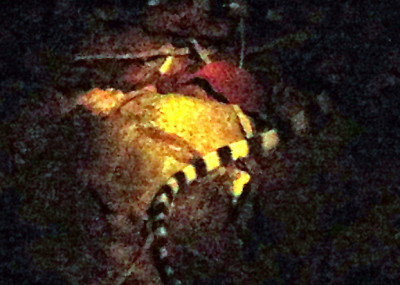
Image Copyright Paul Dunr 2015
Last Observed: November 2015
Observed By: Paul Dunn
The banded krait is a long (typically 1.8 metres) species of elapid snake found in India and Southeast Asia.
Banded kraits are a shy and timid species of snake that are mainly nocturnal. They are typically lethargic and non-aggressive even when confronted. You should still treat them with great respect though due to their highly toxic venom which contains many different neurotoxins.
There are very few recorded cases of banded krait bites on humans but they can be fatal (estimates range from 1% – 10% untreated mortality rates).
Banded kraits, like the king cobra, feed mainly on other snakes, particularly rat snakes and keelbacks, but they also feed on fish, frogs and skinks.
Banded Krait Wikipedia
Water Monitor (Varanus salvator)
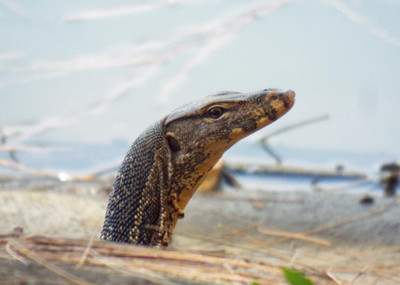
Image Copyright Sam Kettel
Observed: Koh Chang, January 2016
Observed By: Sam Kettel
The water monitor is a huge and relatively common lizard that is native to South and Southeast Asia. As the name suggests their habitat is in or around areas close to water.
Typical adult lenghts of these lizards range from 1.5 to 2 metres long but the longest specimen ever recorded was a huge 3.21 metres.
They are the world’s second largest species of lizard after their giant relatives the Komodo Dragon.
Water monitors are strong swimmers and their diet is a combination of land and aquatic life including fish, frogs, rodents, turtles, snakes, eggs and even young crocodiles.
Water Monitors are not overall an endangered despite a market for their skins but their range has been dramatically reduced by destruction of habitat, particularly in mainland India.
Water Monitor Wikipedia
Image Copyright Sam Kettel
Image Copyright Sam Kettel
Image Copyright Sam Kettel
Image Copyright Sam Kettel
Image Copyright Sam Kettel
Image Copyright Sam Kettel
Red-Tailed Racer (Gonyosoma oxycephalum)
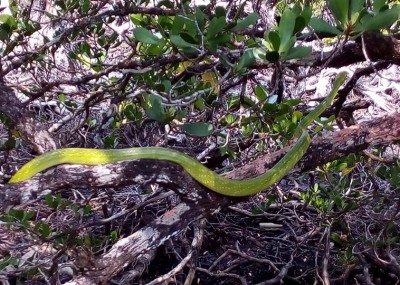
Image Copyright Teerasak Thomas Suamcheepmasau
Last Observed: Jan 2016, Koh Chang
Observed By: Teerasak Thomas Suancheepmasau,Paul Dunn
The red-tailed racer is a species of ratsnake native to Koh Chang. It is also known as the red-tailed green ratsnake but red-tailed racer is way cooler so that’s what we’ll call it here.
This is a large and powerful snake. The female is larger than the male and can reach lengths of up to 2.8 metres. They live up to 20 years in captivity.
They live in trees and seldom come to ground. They feed almost exclusively on birds, bird eggs and bats, which they catch in mid-flight whilst hanging from branches.
They are a non-venomous snake but can still be aggressive and give a nasty bite.
Red-Tailed Racer Wikipedia
Image Copyright Paul Dunn
Image Copyright Teerasak Thomas Suamcheepmasau
King Cobra (Ophiophagus hannah)
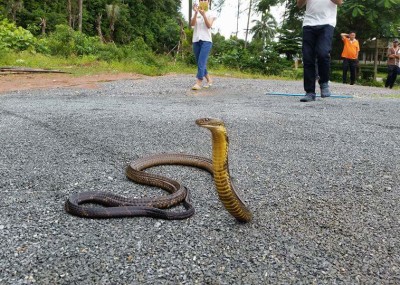
Image Copyright Stian Giordano Dahler
Last Observed: 2014
Observed By: Hans Goossens
The infamous, magnificent king cobra is the world’s longest species of venomous snake, growing in rare cases to nearly six metres in length. It isn’t that closely related to other species of cobra and instead is the sole member of its own genus.
The king cobra feeds mainly on other snakes. So if you see one you can make a fair guess that there are other snakes nearby. They are probably hiding though.
The snake is predominantly a grey-green colour with a paler belly but can also be tan or even black in colour. Juvenile snakes are totally different in appearance though being black with yellow bands across. They can be confused with the banded Krait but are distinguishable by their characteristic hood.
King cobras locate prey with an extremely attuned sense of smell, keen eyesight and a sensitivity to small vibrations in the earth.
Dangerous?
King cobras have a highly toxic venom that they inject in large quantities when they bite. And they react very aggresively when they feel threatened, adopting the characteristic cobra hood and rearing stance that displays a preparedness to strike.
But studies have revealed that their first instinct is to avoid confrontation and cases of king cobra bites are surprisingly rare, particularly so since it is so frequently encountered by people.
One piece of good advice when confronted by a provoked and aggresive king cobra is to slowly remove a hat or other piece of clothing and toss it to the ground while backing away. Then a change of shorts might be in order.
King Cobra Wikipedia
Indo-Chinese Rat Snake (Ptayas korros)
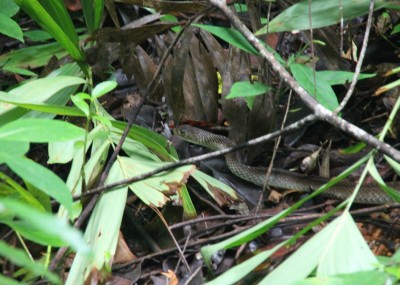
Image Copyright Hans Goossens
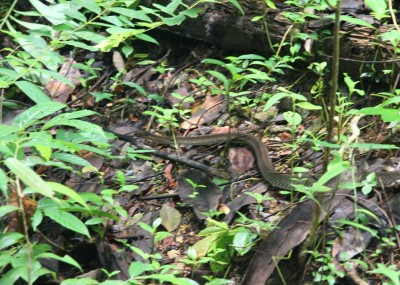
Image Copyright Hans Goossens
Last Observed: February 2016
Observed By: Hans Goossens
The Indo-Chinese Rat Snake Rat Snake, A.K.A. Chinese ratsnake is a nonvenomous snake from the colubrid family. It can grow to a length of 1.7 metres.
Indo-Chinese Rat Snake Wikipedia
Spotted Flying Dragon (Draco maculatus)
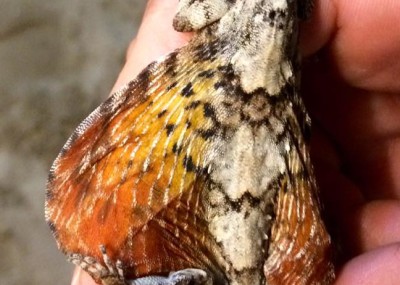
Image Copyright Michael Martin
Last Observed: February 2016 2015
Observed By: Michael Martin, Nikki Barracuda
Now the spotted flying dragon is a splendid little lizard. It doesn’t actually fly of course, but it can glide a hell of a long way from tree to tree. It does this by extending special brilliantly coloured “wings” which are flaps of skin that it makes rigid when gliding and tucks away when on the ground.
Spotted Flying Dragon Wikipedia
Image Copyright Michael Martin
Image Copyright Michael Martin
Image Copyright Michael Martin
Image Copyright Michael Martin
Image Copyright Michael Martin
Image Copyright Michael Martin
Image Copyright Michael Martin
Image Copyright Michael Martin
Image Copyright Michael Martin
Image Copyright Nikki Barracuda
Image Copyright Nikki Barracuda
Image Copyright Nikki Barracuda








